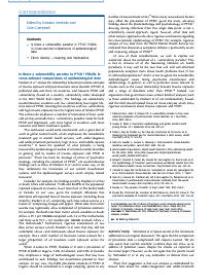Is there a vulnerability paradox in PTSD? : Pitfalls in cross-national comparisons of epidemiological data
Dückers et al analyse the relationship between prevalence estimates of trauma exposure and post-traumatic stress disorder (PTSD) in published data-sets from 24 countries, and between PTSD and vulnerability (based on a country vulnerability index developed in the 2013 World Risk report). The findings are substantially counterintuitive; countries with low vulnerability have higher life-time rates of PTSD, meaning that countries with low vulnerability and high trauma exposure have the highest rates of lifetime PTSD. The authors do emphasise a number of limitations of their work, and yet they conclude that a ‘vulnerability paradox’ exists for both PTSD and depression, with rates higher in countries with more resources and better healthcare systems.
Geachte bezoeker,
De informatie die u nu opvraagt, kan door psychotraumanet niet aan u worden getoond. Dit kan verschillende redenen hebben,
waarvan (bescherming van het) auteursrecht de meeste voorkomende is. Wanneer het mogelijk is om u door te verwijzen naar de bron
van deze informatie, dan ziet u hier onder een link naar die plek.
Als er geen link staat, kunt u contact opnemen met de bibliotheek,
die u verder op weg kan helpen.
Met vriendelijke groet,
Het psychotraumanet-team.
In: The British Journal of Psychiatry, ISSN 0007-1250 | 209 | 6 | 527
http://doi.org/10.1192/bjp.209.6.527


